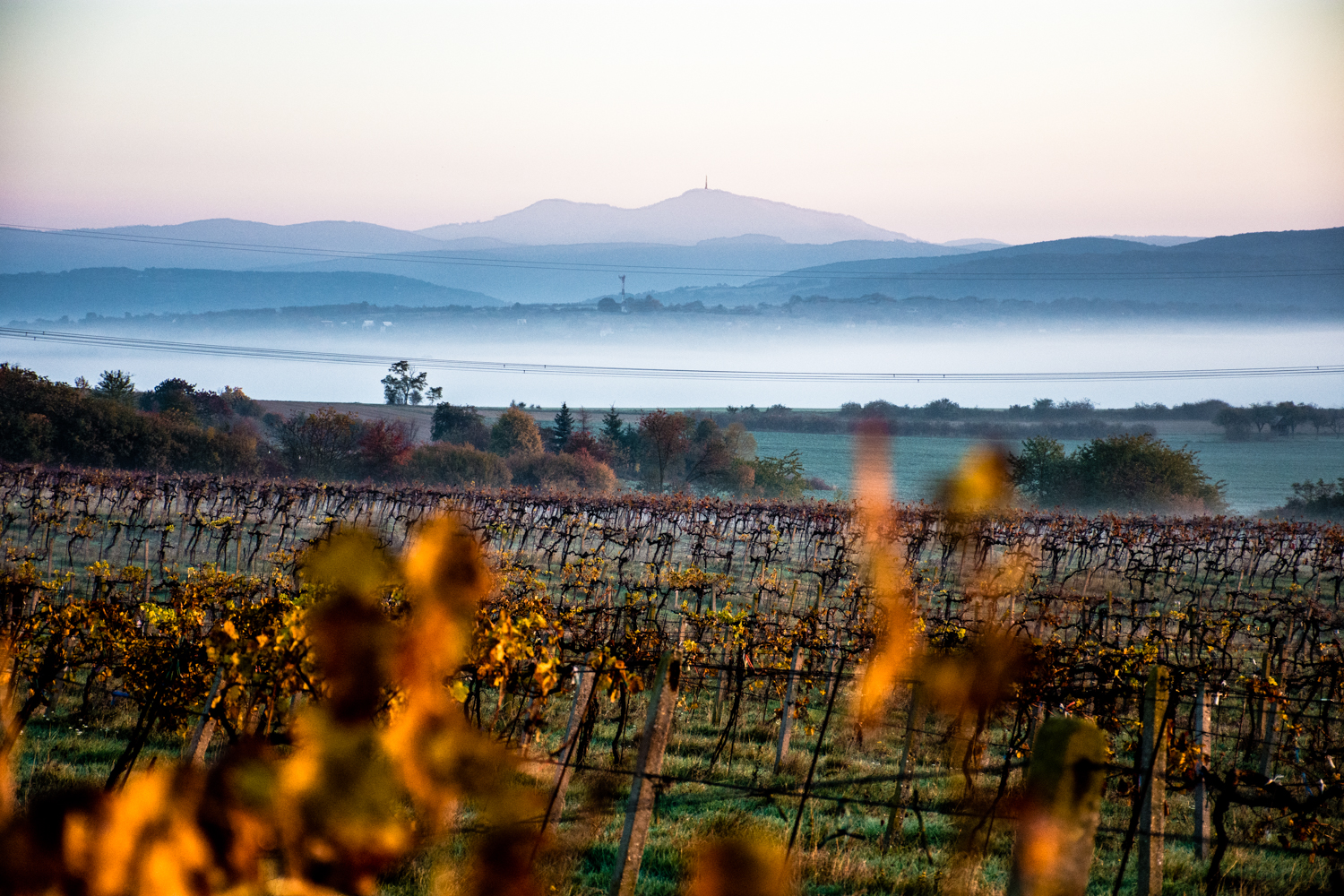Brhlovce is located 12 kilometers from the district town of Levice and their vineyards are part of the vineyard landscape under the volcano Sitno. The vineyards are located here on the Ipeľ Hills, which flows smoothly into the southwestern foothills of the Štiavnica Hills. The vineyard in Brhlovce sinks its roots deep into the volcanic bedrock, which in ancient times was created by the mighty volcano Sitno.

Brhlovce and the wider surroundings of the village is a magical place where two climatic worlds meet on a volcanic bedrock. Geologically and biologically, the hot – southern part of Europe (Pannonian Basin – Pannonicum) ends here and the cold – northern part of Europe (Western Carpathians – Carpaticum occidentale) begins.
In Brhlovce we have very hot and dry summers. From the Pannonian Basin, the Danubian Lowland, hot and warm air flows to us from the south in the summer, which hard hits the impenetrable and cold wall formed by the Štiavnica Hills. This natural wall, which is dominated by the Sitno stratovolcano, will stop this southern heat in our country. That is why we are one of the warmest areas in Central Europe. Thanks to this, red varieties thrive very well in our country, especially Frankovka modrej and Pinot noir. In autumn and winter, on the other hand, cold and frost flows from the Štiavnica hills. Winters can be very cold. In Brhlovce we live on the edge of two climatic worlds, in a land of contrasts.
Wine geology
The vineyards below the Sitno volcano are mostly located on tuffs and andesites. We can simply say that soft tuff is volcanic ash and hard andesite is volcanic lava. Volcanic soil is porous and perfectly absorbs water, gases and oxygen, which is then available to the vine when it sinks its roots into the volcanic subsoil.

There is quite a big difference in the nature of the weather between the individual years. Therefore, the key to understanding our wines is to know the location of the vineyard and the character of the vintage from which you are drinking wine. In cold vintages such as 2010, 2014 and 2020, wines are fresher with higher acidity and need more time to show us their inner beauty and elegance. In warm vintages such as 2012 and 2015, wines are more opulent and usually even more accessible. The years 2011, 2016 and 2019 were exported and the wines from them are complex.

The stratovolcano Sitno, which created the geological subsoil of Brhloviec, was originally up to 4 km high and occupied about 2200 km².
Today Sitno is reaching 1009.2 m above sea level and it is the highest peak of the Štiavnica Mountains. In its fallen caldera there is a place an architectural gem, the historical town of Banská Štiavnica. Sitno is a hill of many myths and legends, the most famous is the one about the Knights of Sitno living in the underground of Sitno, who are ready to help the nation when it is at its worst.
The development of the Sitno stratovolcano itself was complex and took place in the period of Baden to Sarmat (approximately in the interval 15.0 – 11.0 million years ago) in five main cycles.
During this period, explosive and calm periods alternated, during which the volcano spewed various types of volcanic eruptions. Sitno is the remnant of a solidified lava flow from andesite, which spilled in the Neogene into a hollow formed in softer volcanic rocks (tuffs) and today forms the highest part of the mountain range.
Volcanic soils represent only 1% of the total land area, but these 124 million hectares of land provide nutrition for 10% of the world’s population!